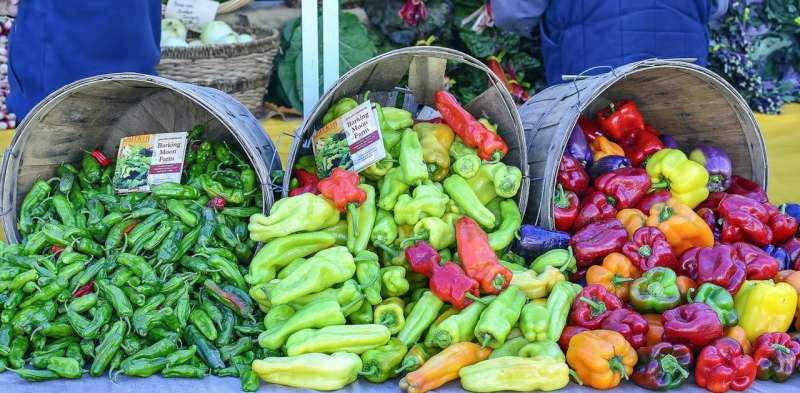Want to eat healthy? Try an eco-friendly diet

Following our annual Christmas overindulgence, many of us have set ambitious goals for the year ahead. But eating healthy shouldn't just mean cutting down on snacks; given the , a more sustainable diet should feature high on everyone's list of New Year's resolutions.
Australians have one of the largest , so there's definitely room for improvement. But, as with all diets, radical and sudden changes like going vegan or vegetarian are .
Smaller, more achievable are more realistic. This also makes sense from an environmental perspective – large-scale drastic changes .
This guide is about making informed, feasible changes towards a more environmentally sustainable diet. It starts with the food items you put in your shopping basket.
Meat, junk and waste
Sustainability researchers, like myself, track the from farm to fork, measuring the energy used and emissions generated by the entire process.
Australia's food consumption contributes significantly to , , land clearing and biodiversity loss, and .
Read more: Kitchen Science: from sizzling brisket to fresh baked bread, the chemical reaction that makes our favourite foods taste so good
There are many reasons our diets have such a large environmental impact, but one of the biggest is that we're a nation of meat eaters. On average, an Aussie eats 95kg of meat a year, significantly more than the of 69kg.
Generally, animal-derived foods require . This is particularly true for red meat: .
Another reason is our overconsumption of total calories, often driven by junk foods. Eating more food than we need means the environmental resources used in producing that extra food are wasted. It also leads to a .
Finally, the in Australia – – also has a major impact.
What is realistic dietary change?
Sustainable dietary choices aren't just about environmental impact – it also means being realistic and consistent. Only 11% of Australians are , so expecting a majority to drastically reduce meat consumption is impractical, and probably alienating.
Alternatives like flexitarianism (eating meat more rarely) are more achievable for most.
An added complication is that most Australian cows are raised on pasture, which has a high carbon footprint but than growing many plant foods. So, the complete substitution of red meat or dairy with plant-based products could simply change one environmental impact for another.
Putting it all together – simple shopping advice
Moderation: Cutting out staples of the Australian diet, like meat, is not a realistic goal for many people. But try moderating your cmeat that has the highest environmental impact (beef and lamb) and instead go for chicken or pork.
Reducing junk food is good for your wallet, waist and the environment. Processed meats or dairy-based desserts have the , so when the urge to indulge hits, go for fruit-only desserts such as sorbets. Or just buy more fruit to freeze and turn into delicious and healthy smoothies that you can enjoy even more regularly. (Grapes are very high in sugar, and when frozen are great summer treats.)
Meal planning can also help cut down food waste, so it might be worth trying a pantry planning app.
Substitution: Think about your favourite recipes, and how you can swap out the most resource-greedy ingredients. Some meats can be replaced with alternative sources of protein such as legumes and nuts.
Sustainably-farmed or sourced seafood is another protein alternative with a lower environmental footprint compared to meat, as long as you – for canned tuna make sure to check the label! Seasonal produce usually requires fewer resources and needs to travel less to the store, so it's worth checking a guide to .
Complex packaging of many food products, which is often unnecessary, also contributes to their environmental impact. Opt for loose fruit and vegetables and take your own shopping bags.
Experimentation: When you do buy meat, opt for novel protein sources such as game meat – we are lucky to have an abundance of kangaroo as a more sustainable protein alternative in Australia. If you're feeling even more adventurous, you could also .
This guide is a starting point for thinking about a more sustainable diet, but food systems are . Animal welfare and the viability of farming communities are just part of the social and economic issues we much deal with.
Ultimately, while consumers can drive change, this will be incremental: transformative change can only be achieved by food producers and retailers also coming on board to drive a more sustainable food system.
Provided by The Conversation
This article was originally published on . Read the .![]()



















